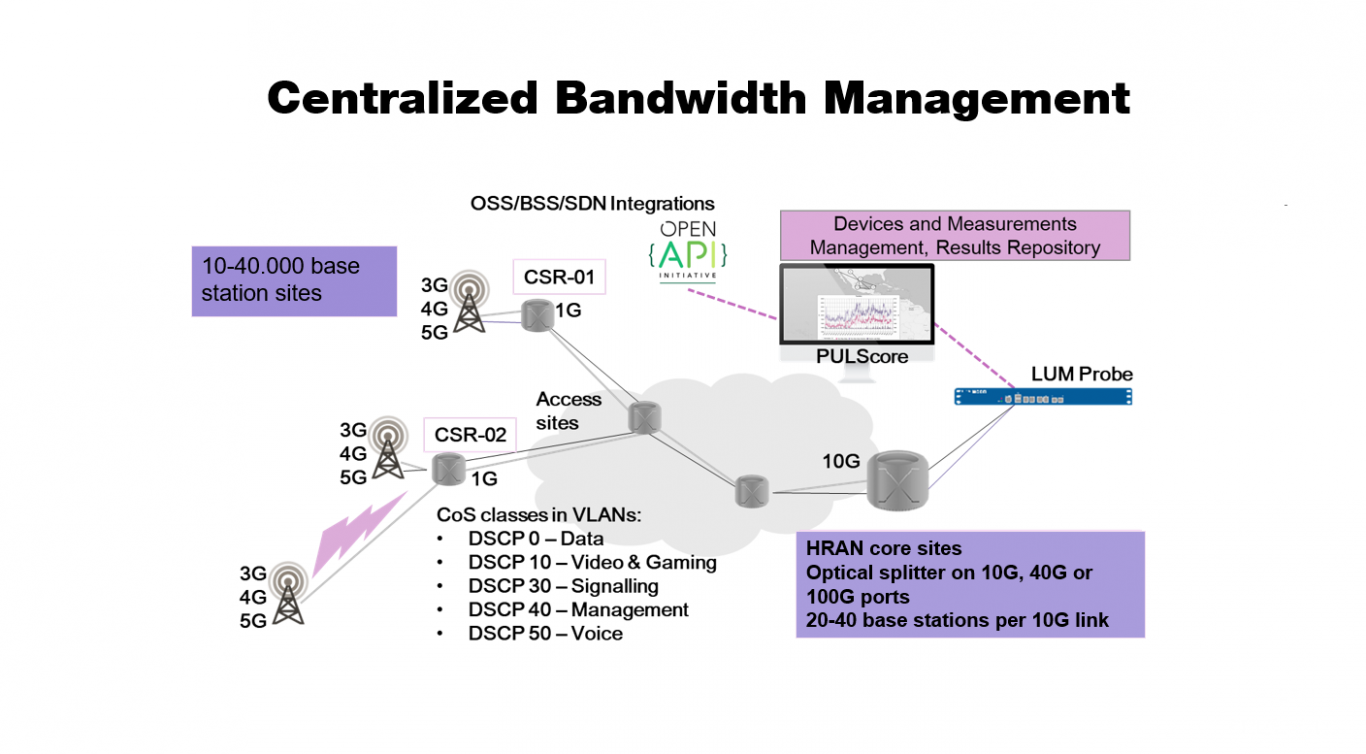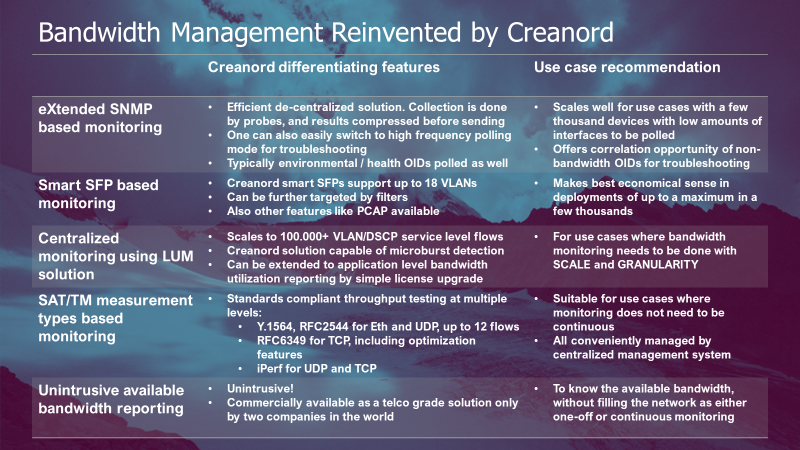Efficient Performance Monitoring of 5G Mobile Networks with Centralized Bandwidth Management

Operators have been focused on rolling out their 5G networks. But as the networks go into production, the next challenge is to ensure that the speed and connectivity promises are realized in practice in order to offer an exceptional 5G experience at a manageable cost.
With the enhanced speed and connectivity of 5G, there will be surge in network traffic, calling for efficient and cost-effective techniques for monitoring the network and its quality to make sure the network delivers as promised. And as always, cost is a major factor in the decision-making process.
Traditional approaches will no longer be sufficient to manage the performance of the network in a 5G scenario. The usual approach to monitor the network performance has been a link-based strategy with the SNMP protocol used for collecting utilization, packet loss and other KPIs for the network with a typical five minute granularity for the data. But in the 5G networks there is a huge variety of traffic mixes with critical, low-latency, high reliability traffic running alongside streaming, browsing and other non-critical traffic. To ensure the quality and performance for all the different traffic classes, a much more granular view is needed with one second or ten second granularity. And the KPIs are needed for each service class separately further multiplying the number of KPIs that need to be collected.
Simply increasing the polling frequency is not possible as the processing power in the cell site routers aren’t sufficient and delays for requests/responses between the centralized poller and the base stations are simply too large for a high-frequency scenario. And rolling out optimized hardware, such as smart SFPs, to off-load the routers is neither feasible in a mobile network as installation costs get too high to install the SFPs at thousands of sites.

For the 5G networks, a new approach is needed where a probe is deployed at central locations. This specialized probe collects traffic at high speeds and with high granularity. The probe taps into multiple 10G, 40G or 100G links at the high RAN site, captures the header info, provides initial analytics on the data and sends it back to the management and reporting solution for further analysis and reporting.
Thus, a large portion of the network can be covered with just one probe, since the traffic from the base stations is aggregated and transported through only a few high RAN core sites. These specialized probes can monitor tens of thousands or even up to hundreds of thousands of flows at second or 10 second granularities and in addition detect microbursts within the flows for a more detailed understanding of the traffic patterns. It is no challenge for them to cover all the needed service classes to provide a full view of the traffic within the backhaul network. And the probes off-load the routers in the network as there is no longer a need to collect bandwidth KPIs from the routers themselves.
Furthermore, the solution is future-proof as these probes can also be extended to do advanced application analytics on top of the traffic data if a deeper understanding of the traffic types and applications in the network is needed in addition to the normal bandwidth KPIs. The application analytics provides details on what type of traffic and how much of it there is in the network such as what type of web traffic, what is the proportion of streaming data and from which providers, how much business critical traffic is there and what type of traffic and so on.
To efficiently monitor your 5G network you need to change your mindset and start considering centralized monitoring approaches. With a centralized approach you can cost-efficiently monitor your entire 5G network by installing purpose-built probes at only a few core locations to provide you the data you need at the granularities you need.
Summary
As networks evolve, more scale and granularity are needed for efficient bandwidth management and for the critical traffic on the networks you need to augment the data with an end-to-end view of the bandwidth as well. Creanord can offer an advanced toolset for efficient bandwidth management, whether you want to optimize your existing link-based solution or move to a more granular and efficient centralized solution complemented by tools for end-to-end bandwidth management. The picture below provides an overview of the Creanord solution.

Creanord is a specialist in service assurance with more than 20 years of experience in developing solutions for network service providers and cloud providers. Creanord’s service assurance solutions enable accurate tracking of network and application quality and performance and the technology has been implemented in over 30 countries and more than 60 networks globally.
Contact us to find out more on how we can help you build outperforming networks here